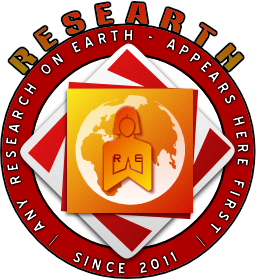Consequences of accelerated Global Warming on nature and economy and the remedies for Global Green Economy
DOI:
https://doi.org/10.51611/iars.irj.v3i1.2013.28Keywords:
GLOBAL WARMING, KYOTO PROTOCOL, CARBON CREDITS, CO2 EMISSIONAbstract
Abstract: Global warming is the problem of 21st century for the globe. The root cause of problem is heavy oil consumption, deforestation, CO2 emission due to human and industrial activities and the rising threats of globalization like terrorism etc. This paper will address the impact of global warming on the Industries, human resource and the flora and fauna. The human resource has made a significant change in the current environment with the collective use of industries and the other GHG (Green House Gases) causing disturbance in the environment. In addition, the human resource is thinking on this issue, as it has become a global issue. There have been initiatives taken on Global Scale when Kyoto protocol agreement was signed which is in continuation till 2012. There have been further initiatives when the Ministers from across the global met at Copenhagen but at the end of the end there have been no discrete plans for Global Warming. Though it is a problem but how certainly can we manage this is more important. Global warming solutions can reduce the amount of heat-trapping gases that we emit into the atmosphere. Among the solutions, is a model G2I3 addressed in this paper and the role of every Individual which can make a great impact on the environmental problems.
Downloads
References
Christopher Matthews (2006), Deforestation causes global warming, DOI: http://www.fao.org/newsroom/en/news/2006/1000385/index.html
CSIRO.AU (2007), Confirmed – deforestation plays critical climate change role; DOI: http://www.csiro.au/news/GlobalCarbonProject-Deforestation
Diaz, H.F. and N.E. Graham. (1996). Recent changes in tropical freezing heights and the role of sea surface temperatures. Nature 383, 152-155.
Easterling, D.R., B. Horton, P.D. Jones, T.C. Peterson, T.R. Karl, D.E. Parker, M.J. Salinger, V. Razuvayev, N. Plummer, P. Jamason, and C.K. Folland, 1997. Maximum and minimum temperature trends for the globe. Science 277, 364-367.
Epstein, P., H. Diaz, S. Elias, G. Grabherr, N. Graham, W. Martens, E. M. Thompson, and J. Susskind. (1998) Biological and physical signs of climate change: focus on mosquito borne diseases. Bulletin of the American Meteorological Society 79, 409-417.
Epstein, Paul R. (1999) Climate and health. Science 285, 347-348.
Mongabay.com (2007), U.S. can cut oil imports to zero by 2040, oil use to zero by 2050, DOI: http://news.mongabay.com/2007/0329-lovins.html#yHtq8g7Rae7kJLYX.99
Raymond E. Gullison, Peter C. Frumhoff, Josep G. Canadell, Christopher B. Field, Daniel C. Nepstad, Katharine Hayhoe, Roni Avissar, Lisa M. Curran, Pierre Friedlingstein, Chris D. Jones, and Carlos Nobre. Tropical Forests and Climate Policy. Published online May 10 2007; 10.1126/science.1136163 (Science Express Policy Forum)
Rohilla, S. (2008), Fight Against Global Warming, DOI: http://blogs.rediff.com/hi123/2008/06/30/fight-against-global-warming
Union of Concerned Scientists (2011), Early Warning Signs of Global Warming: Spreading Disease DOI: http://www.ucsusa.org/global_warming/science_and_impacts/impacts/early-warning-signs-of-global-9.html
Downloads
Published
Issue
Section
License
Copyright (c) 2013 Navneet Gera

This work is licensed under a Creative Commons Attribution 4.0 International License.
Author(s) hold complete right on the content of this article. Copyright to the content are governed as per Copyright Policy of the Journal.





















